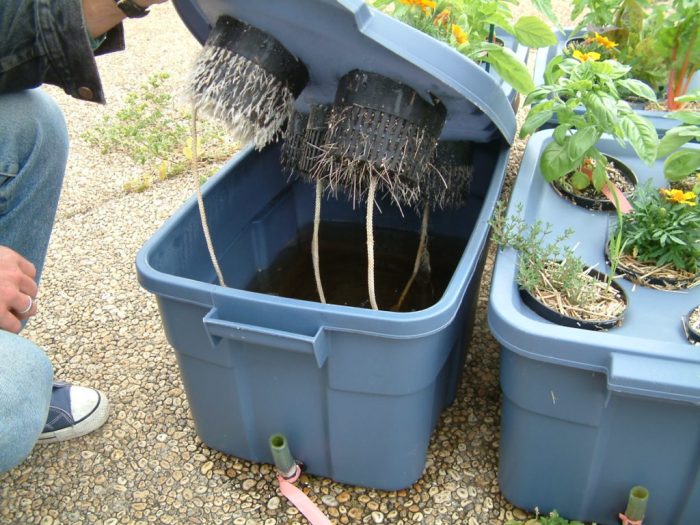DIY Trellis for Cucumbers: Imagine a garden overflowing with plump, juicy cucumbers, each one nestled perfectly on a sturdy trellis you built yourself. Growing cucumbers vertically on a trellis is a fantastic way to maximize your garden space, promote healthy vine growth, and prevent them from sprawling across the ground. Not only will you enjoy a bountiful harvest, but you’ll also create a beautiful and functional addition to your outdoor space.
This guide will walk you through the process of creating your own DIY cucumber trellis, from choosing the right materials to assembling the structure and planting your cucumbers. We’ll explore different design options, offer tips for successful cultivation, and provide solutions for common problems. Get ready to unleash your inner gardener and discover the joy of growing your own delicious cucumbers!
Materials for DIY Trellis Construction
Choosing the right materials for your cucumber trellis is essential for its stability, durability, and longevity. Consider your garden space, budget, and the desired aesthetic when selecting the best materials for your trellis.
Common Materials for DIY Cucumber Trellises
A variety of materials can be used for building cucumber trellises. Some common options include:
- Wood: Wood is a classic choice for trellises due to its natural beauty, strength, and versatility. It’s readily available, easy to work with, and can be stained or painted to match your garden’s aesthetic.
- Metal: Metal trellises offer durability and longevity, particularly in areas with high humidity or exposure to the elements. Metal can be more expensive than wood, but it is generally more resistant to rot, insects, and weathering.
- Plastic: Plastic trellises are lightweight, affordable, and often come in various colors and designs. However, they may not be as durable as wood or metal and might need to be replaced more frequently.
- Bamboo: Bamboo is a natural and sustainable option for trellises. It is lightweight, strong, and aesthetically pleasing. However, it may not be as durable as wood or metal in some climates.
Comparing the Pros and Cons of Different Materials
Here’s a closer look at the advantages and disadvantages of each material:
| Material | Pros | Cons |
|---|---|---|
| Wood | Natural beauty, strength, versatility, easy to work with, readily available, can be stained or painted | Susceptible to rot, insects, and weathering, can be more expensive than metal or plastic |
| Metal | Durable, long-lasting, resistant to rot, insects, and weathering, can be easily cleaned | Can be more expensive than wood or plastic, may require rust prevention measures |
| Plastic | Lightweight, affordable, available in various colors and designs, easy to assemble | Not as durable as wood or metal, may need to be replaced more frequently, may not be as aesthetically pleasing |
| Bamboo | Natural, sustainable, lightweight, strong, aesthetically pleasing | May not be as durable as wood or metal in some climates, may be more difficult to find in some areas |
Choosing the Right Materials for Your Garden Space and Budget
Consider the following factors when choosing the best materials for your cucumber trellis:
- Garden space: If you have limited space, a lightweight and compact trellis made of plastic or bamboo might be a good option. If you have more space, you can opt for a larger and more robust trellis made of wood or metal.
- Budget: Plastic trellises are typically the most affordable option, followed by bamboo. Wood and metal trellises can be more expensive, but they offer greater durability and longevity.
- Aesthetic: Wood trellises can blend seamlessly with your garden’s natural surroundings. Metal trellises can add a modern touch, while plastic trellises come in various colors and designs.
- Climate: If you live in a humid climate, metal trellises might be a better choice than wood trellises, as they are less susceptible to rot. Bamboo is a good option for warm climates.
Planting and Training Cucumbers on a Trellis
Planting cucumbers on a trellis offers several advantages, including maximizing space, promoting air circulation, and preventing diseases. A trellis also makes harvesting easier and helps protect the fruit from pests and ground-dwelling critters.
Spacing and Planting Techniques
When planting cucumbers on a trellis, proper spacing is crucial for optimal growth and yield. Planting too close together can lead to overcrowding and competition for resources. The recommended spacing between cucumber plants depends on the variety.
- For bush cucumbers, which are more compact, a spacing of 12 to 18 inches is sufficient.
- For vining cucumbers, which grow longer, a spacing of 2 to 3 feet is recommended.
Planting cucumbers on a trellis is a straightforward process. Here are the steps:
- Dig a hole that is slightly larger than the root ball of the cucumber plant.
- Gently loosen the roots of the plant and place it in the hole, ensuring the top of the root ball is level with the soil surface.
- Backfill the hole with soil, pressing it down firmly to eliminate air pockets.
- Water the plant thoroughly to settle the soil and encourage root growth.
- Tie the plant to the trellis using twine or clips to help it climb vertically.
Training Cucumber Vines
Training cucumber vines to climb the trellis is essential for maximizing growth and fruit production. As the vines grow, you will need to guide them upwards.
- Use twine or clips to tie the vines to the trellis at regular intervals.
- Avoid tying the vines too tightly, as this can restrict their growth.
- As the vines grow taller, continue to tie them to the trellis to prevent them from sprawling or falling over.
Pruning Cucumber Vines
Pruning cucumber vines is an important practice that can help to promote growth and fruit production. By removing excess foliage, you can direct the plant’s energy to producing more fruit.
- Pinch off the top of the main stem once the plant has reached the desired height. This encourages lateral growth and fruit production.
- Remove any side shoots that grow from the main stem. These shoots can compete with the main stem for resources.
- Remove any damaged or diseased leaves or stems. This helps to prevent the spread of disease.
Examples of DIY Trellis Projects
There are many different ways to build a DIY trellis for your cucumbers, and the best approach will depend on your personal preferences, the size of your garden, and the type of cucumbers you’re growing. Here are a few examples of successful DIY cucumber trellis projects that you can use as inspiration.
Types of DIY Cucumber Trellises
| Trellis Type | Materials Used | Project Difficulty | Unique Features |
|---|---|---|---|
| A-Frame Trellis | Wood, PVC pipe, wire mesh | Easy | Provides a sturdy and stable support for cucumbers, can be easily moved around the garden, and can be built to any size. |
| T-Trellis | Wood, PVC pipe, wire mesh | Easy | Provides a simple and effective support for cucumbers, can be easily built and installed, and can be used for a variety of other plants. |
| Horizontal Trellis | Wood, PVC pipe, wire mesh | Easy | Provides a large surface area for cucumbers to grow on, can be easily built and installed, and can be used for a variety of other plants. |
| Vertical Trellis | Wood, PVC pipe, wire mesh | Medium | Provides a vertical support for cucumbers, can be used to create a privacy screen or a decorative feature in the garden, and can be built to any height. |
| Trellis Panels | Wood, PVC pipe, wire mesh | Medium | Provides a modular and flexible support for cucumbers, can be easily moved around the garden, and can be used to create a variety of different trellis designs. |
| Trellis Arches | Wood, PVC pipe, wire mesh | Difficult | Provides a decorative and functional support for cucumbers, can be used to create a walkway or a focal point in the garden, and can be built to any size. |
A-Frame Trellis
An A-frame trellis is a simple and effective way to support cucumbers. It is made from two pieces of wood that are joined together at the top to form a triangular shape. The base of the triangle is secured to the ground, and the cucumbers are trained to grow up the sides of the trellis. This type of trellis is easy to build and can be made from a variety of materials, such as wood, PVC pipe, or even bamboo.

T-Trellis
A T-trellis is a simple and versatile trellis that can be used to support a variety of plants, including cucumbers. It is made from two pieces of wood that are joined together in a T-shape. The bottom of the T is secured to the ground, and the cucumbers are trained to grow up the vertical piece of wood. This type of trellis is easy to build and can be made from a variety of materials, such as wood, PVC pipe, or even metal.

Horizontal Trellis
A horizontal trellis is a simple and effective way to support cucumbers. It is made from a horizontal piece of wood or PVC pipe that is supported by stakes or posts. The cucumbers are trained to grow up the horizontal support. This type of trellis is easy to build and can be made from a variety of materials, such as wood, PVC pipe, or even wire mesh.

Vertical Trellis
A vertical trellis is a more elaborate trellis that can be used to support cucumbers. It is made from a series of vertical supports that are connected together to form a wall or screen. The cucumbers are trained to grow up the vertical supports. This type of trellis can be used to create a privacy screen or a decorative feature in the garden.

Trellis Panels
Trellis panels are a modular and flexible way to support cucumbers. They are made from a series of panels that can be connected together to create a trellis of any size or shape. The cucumbers are trained to grow up the panels. This type of trellis is easy to move around the garden and can be used to create a variety of different trellis designs.

Trellis Arches
Trellis arches are a decorative and functional way to support cucumbers. They are made from two curved pieces of wood or PVC pipe that are connected together at the top to form an arch. The cucumbers are trained to grow up the arch. This type of trellis can be used to create a walkway or a focal point in the garden.

Inspiration and Creative Ideas: Diy Trellis For Cucumbers
A trellis for cucumbers doesn’t have to be a simple, boring structure. Unleash your creativity and explore unique designs that will add a touch of personality to your garden.
Think beyond traditional trellises and consider incorporating recycled materials or artistic elements.
Recycled Materials for Trellises
Using recycled materials for your trellis is a fantastic way to give old items a new life while adding a unique touch to your garden.
- Old Ladders: A sturdy ladder can be repurposed as a vertical trellis. You can lean it against a wall or fence, or even secure it to a post for a more permanent structure.
- Wooden Pallets: Pallets are readily available and can be transformed into a variety of trellises. You can use them as a standalone structure, or cut them into smaller sections to create individual trellises for your cucumbers.
- Metal Wire: Metal wire can be used to create a variety of trellis designs. You can weave it into a grid, create a spiral shape, or even bend it into a unique design.
- Bamboo: Bamboo is a natural and sustainable material that can be used to create beautiful trellises. You can weave bamboo poles together, or use them as vertical supports for a more traditional trellis design.
Artistic Trellis Designs, Diy trellis for cucumbers
Embrace your artistic side and create a trellis that reflects your personal style.
- Painted Trellises: A simple trellis can be transformed into a work of art with a coat of paint. You can paint it a bright color, create a patterned design, or even add a whimsical mural.
- Trellis with Mosaic Tiles: Add a touch of color and texture to your trellis by incorporating mosaic tiles. You can use broken tiles, glass shards, or even pebbles to create a unique and eye-catching design.
- Trellis with Hanging Planters: Integrate hanging planters into your trellis design to create a lush and vibrant display. You can use them to grow herbs, flowers, or even more cucumbers.
- Trellis with Sculptures: For a truly unique touch, incorporate sculptures into your trellis design. You can use found objects, recycled materials, or even create your own sculptures to add a touch of whimsy to your garden.
With a little creativity and effort, you can build a DIY cucumber trellis that will not only support your vines but also enhance the beauty of your garden. Whether you choose a simple A-frame or a more elaborate vertical design, the satisfaction of growing your own cucumbers will be well worth the time and effort. So, gather your materials, get creative, and let’s get growing!
Building a DIY trellis for cucumbers is a great way to maximize your garden space and support the vines as they grow. You can use a variety of materials, from wood to metal, and get creative with the design. If you’re looking for inspiration, check out these DIY shelf dividers that showcase how to use simple materials to create functional and attractive structures.
These techniques can be adapted to building a sturdy trellis that will keep your cucumbers thriving all season long.



